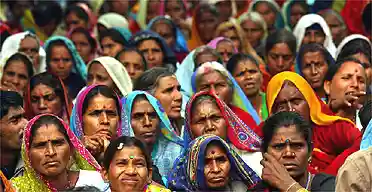In India, this section of society was traditionally included in the lowest class and had to endure various forms of physical and mental abuse. In the caste system, they were considered outside the Shudra or lower caste, that is, different from everyone else. They were deprived of various social, economic, and cultural rights.
1. History of Dalits and the Caste System:
The caste system has existed in Indian society since ancient times, and was originally divided into four main classes—Brahmins, Kshatriyas, Vaishyas, and Shudras. This classification was designed in such a way that the Shudras and the groups below them were always placed in a lower position socially, economically, and politically. They were considered “untouchables” or “impure,” meaning that touching them or going near them was considered impure.
This system affected every aspect of their lives—food, housing, educational opportunities, religious rituals, even married life. They were only allowed to do menial jobs, such as cleaning up dirt, skinning, and cremating corpses.
2. Dr. B. R. Ambedkar's role:
Dr. B. R. Ambedkar was a social reformer in many fields and a prominent representative of Dalits. He played a key role in drafting the Constitution of India in 1950, and one of his goals was to establish equal rights for Dalits. Ambedkar knew that this discrimination could not be eliminated through legal measures alone, so he worked to create awareness among the people.
He was once averse to Hinduism and converted to Buddhism because he found the discrimination against Dalits in Hinduism unacceptable. Ambedkar's decision opened a new direction for the Dalit community.
3. Dalit literature and culture:
Dalit literature or “Dalit Literary Movement” is an important social movement. Through it, Dalit writers have expressed their struggles, frustrations, humiliations and protests in literary form. The real experiences from which they have written literature have exposed a dark side of Indian society. Dalit literature tells the story of the glorious history of Dalits and their struggles.
Manoranjan Bepari, Shirish Kumar, Neeraj Lodhi, Kanailal Sao, and many other Dalit writers have protested against the injustice and exploitation of society in their writings. This literary movement is an important step towards social change.
4. Current situation:
After the Indian Constitution came into force in 1950, discrimination against Dalits was banned and seats were reserved for them. However, discrimination still exists in some sections of society. Dalits, especially in rural areas, face social isolation and physical abuse. Although the Indian government has created various schemes and opportunities for Dalits, the question of how effective they are in practice has been raised.
In addition, in some places, violence and humiliation against Dalits continue. While there is support for Dalits among political parties, it is sometimes used as part of vote bank politics, which is not beneficial for their real advancement.
5. The future of Dalits:
The Indian Constitution has protected their rights and dignity, but there are many obstacles in social reality. Many Dalit families are still landless, deprived of education and far from healthcare. In particular, in many places Dalits are still not accepted in schools or hospitals, they are kept separate, they are physically attacked.
In addition, there has been some progress in spreading political awareness and education about rights in India, but it is very limited. Therefore, increasing education, cultural awareness, and political participation is necessary to establish real development, social acceptance, and dignity for Dalits.
More steps to protect Dalit rights:
1. Education development: It is very important to reach education and primary healthcare among Dalit children. The government and society need to put more emphasis on education.
2. Political participation: To increase political awareness of Dalits, ensure proper exercise of their voting rights, and create opportunities for them to participate in political leadership.
3. Social awareness: To organize more discussions and education about the bias, discrimination and violence that exists against Dalits within society.
4. Economic development: Further encourage job opportunities, training, and entrepreneurial initiatives for Dalits.
Conclusion:
The struggle for the rights and dignity of Dalits continues to this day. Since the inequalities in Indian society are so deep and historically rooted, it will take time and a massive struggle to change them. However, if education, awareness and protest movements are effective, this inequality can be gradually eliminated.


